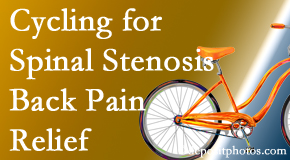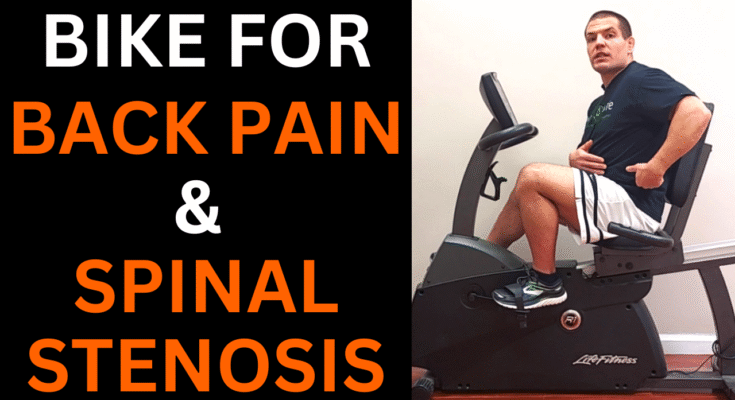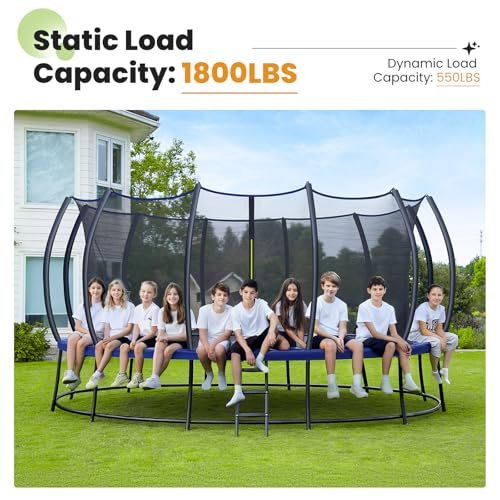If you’re dealing with spinal stenosis, a recumbent bike could be a game-changer for you. Thanks to its comfortable, laid-back seating position, it reduces pressure on the spine, making it a much gentler option for those with back issues.
Spinal stenosis, which narrows the spaces within your spine, often leads to pain and discomfort — and finding the right way to stay active can feel tricky. That’s where recumbent bikes come in. They offer a low-impact way to move your body without putting extra strain on your back.
Unlike traditional upright bikes, recumbent bikes let you lean back into a supportive seat, taking the stress off your lower back and helping ease symptoms. Plus, the smooth pedaling motion can boost blood flow and strengthen key muscle groups, contributing to better overall health.
If you’ve been wondering whether a recumbent bike is the right fit for your situation, you’re in the right place. Let’s dive into the details and see how this gentle but effective workout can support your journey toward greater comfort and strength!

Introduction To Spinal Stenosis
Spinal stenosis affects many people worldwide, impacting their daily lives. Understanding this condition is crucial for managing it effectively. This introduction aims to shed light on the basics of spinal stenosis.
What Is Spinal Stenosis?
Spinal stenosis occurs when spaces within your spine narrow. This narrowing puts pressure on the spinal cord and nerves. It often affects the neck and lower back areas. Age-related changes are common causes. Other factors include arthritis and herniated discs.
Common Symptoms
Symptoms vary but often include pain and numbness. Tingling sensations are frequent in arms and legs. Muscle weakness can also occur. Balance problems may arise in severe cases. Symptoms can worsen over time.
Understanding Recumbent Bikes
Recumbent bikes are gaining popularity among fitness enthusiasts. These bikes offer a unique riding position. You sit back with your legs extended forward. This design reduces strain on the back and joints. It makes recumbent bikes a good choice for people with spinal issues.
The seat is larger and more comfortable than upright bikes. This feature provides better support. It also minimizes pressure on the lower back. For those with spinal stenosis, this can be especially beneficial.
Features Of Recumbent Bikes
Recumbent bikes have several key features. The seat is adjustable and often padded. This adds comfort and support. The pedals are placed in front of the body. This positioning helps to distribute weight evenly. It reduces stress on the spine.
Most models include a digital display. It shows time, distance, and calories burned. This can help track progress. Some bikes have resistance settings. This allows users to adjust their workout intensity.
Benefits Of Using Recumbent Bikes
Recumbent bikes offer many benefits. They provide a low-impact workout. This is gentle on the joints and spine. It makes them suitable for people with spinal stenosis. The seating position encourages proper posture.
This reduces back pain during exercise. The comfortable seat supports longer workouts. Users can exercise without discomfort. Recumbent bikes also help improve cardiovascular fitness. Regular use can strengthen the heart and lungs.
Exercise And Spinal Health
Recumbent bikes offer a low-impact workout, making them beneficial for individuals with spinal stenosis. The reclined position reduces stress on the spine, providing a comfortable exercise option. This can help improve flexibility and strength without aggravating back pain.
### Exercise and Spinal Health Exercise plays a crucial role in maintaining spinal health. If you’re dealing with spinal stenosis, you might wonder about the best ways to stay active. A recumbent bike is often recommended, but why is exercise so important for your spine?
Importance Of Exercise For Spine
Staying active helps keep your spine flexible and strong. Movement can reduce stiffness and improve your overall mobility. Even low-impact exercises can boost blood circulation to the spine, aiding in healing and reducing pain. Strong muscles support the spine, taking pressure off your vertebrae. Regular exercise can also help manage your weight, which reduces strain on your back. This can be especially beneficial if you’re experiencing symptoms of spinal stenosis. Have you ever noticed how sitting for long periods makes your back feel worse? That’s because inactivity leads to muscle weakness and joint stiffness. Engaging in regular exercise can counteract these effects, making you feel better.
Exercise Recommendations For Spinal Stenosis
For those with spinal stenosis, low-impact activities are often best. A recumbent bike provides a comfortable way to get your heart rate up without stressing your spine. It supports your back while allowing you to strengthen your legs and core. Consider walking or swimming as other excellent options. Both are gentle on the joints and help maintain flexibility. Always listen to your body and stop if you feel pain. Incorporating stretching exercises can also be beneficial. Focus on stretches that target your lower back and hamstrings. Consistent stretching can improve your range of motion and alleviate discomfort. You might be wondering how to start an exercise routine safely. It’s wise to consult with a healthcare professional or physical therapist. They can provide personalized advice tailored to your specific needs and condition. What steps are you taking to keep your spine healthy? Remember, the goal is to stay active in a way that feels good and supports your well-being.
Recumbent Bikes And Spinal Stenosis
Spinal stenosis can be painful and challenging. Regular exercise helps manage the symptoms. Recumbent bikes offer a gentle workout option. They are known for comfort and support. They are especially good for those with spinal issues. Let’s explore why they might be a good choice.
Why Choose Recumbent Bikes?
Recumbent bikes have a reclined seat. This design reduces pressure on the spine. It provides a comfortable riding position. The pedals are in front, allowing easy leg movement. This setup makes it easier for people with back pain. The backrest supports the lower back. This can help reduce discomfort during exercise.
Impact On Spine Health
Spinal stenosis can limit physical activities. Recumbent bikes can help maintain activity levels safely. The reclined position supports the spine, minimizing strain. Regular use can improve posture and strengthen core muscles. This exercise helps increase flexibility. It also promotes better blood circulation. Keeping active can ease stiffness and pain.
Comparing Recumbent And Upright Bikes
Recumbent bikes may benefit those with spinal stenosis by offering lower back support and reducing strain. Their design allows a relaxed seating position, which can alleviate discomfort. Upright bikes, on the other hand, may not provide the same level of comfort for back issues.
Choosing the right bike matters for spinal stenosis. Both recumbent and upright bikes offer exercise benefits. But they differ in comfort, safety, and support. Understanding these differences helps in making an informed decision.
Comfort And Ergonomics
Recumbent bikes provide a reclined position. This reduces strain on the back. The seat is larger, resembling a chair. It often includes back support. This design helps distribute weight evenly. Pressure on the spine lessens, making it suitable for spinal stenosis. Upright bikes mimic a regular bicycle. The seat is smaller and lacks back support. This can lead to discomfort for some users. Riders often lean forward, which might strain the back. This position may not be ideal for spinal stenosis patients.
Safety And Support
Recumbent bikes offer better stability. The low center of gravity reduces the risk of falls. This makes them safer for those with balance issues. The wide base provides extra support. Users feel secure while exercising. Upright bikes require more balance. The risk of tipping over is higher. This may pose a challenge for those with mobility concerns. The upright position offers less support. Users must engage their core muscles more actively. “`
Choosing The Right Recumbent Bike
Recumbent bikes can be a comfortable option for those with spinal stenosis. They offer back support and reduce strain. Choosing the right model ensures a gentler workout for the spine. Prioritize bikes with adjustable seats and easy-to-reach handles. Always consult with a healthcare professional before starting any exercise routine.
Choosing the right recumbent bike for spinal stenosis is crucial to ensure you get the most comfortable and effective workout. It’s not just about picking any bike; it’s about finding one that supports your spine and minimizes discomfort. Let’s dive into what makes a recumbent bike suitable for spinal health and explore some top models that cater to these needs.
Key Features To Consider
When selecting a recumbent bike, focus on features that prioritize comfort and support for your back. Adjustable seating is vital. It allows you to find the perfect position that keeps your spine aligned without straining. Look for bikes with lumbar support. This feature provides extra cushioning and helps maintain a natural curve in your lower back, reducing pressure on your spine. Step-through design is another aspect to consider. It makes getting on and off the bike easier, which is particularly beneficial if you have limited mobility due to spinal stenosis. Remember the importance of pedal positioning. The right distance ensures your knees are not overextended, which can inadvertently affect your back.
Top Models For Spinal Health
Some recumbent bikes stand out for their spinal-friendly features. The Schwinn 270 Recumbent Bike is a favorite for its ergonomic design and adjustable seating. It also offers a step-through design, making it easier to use. The Nautilus R616 is another excellent choice. It comes with a padded seat and lumbar support, ensuring comfort during extended workouts. Its built-in workout programs can cater to varying fitness levels, keeping your exercise routine interesting.
Consider the Exerpeutic 400XL Folding Recumbent Bike if space is a concern. It’s compact but doesn’t compromise on comfort, with cushioned seating and a smooth pedaling experience. Do you notice a pattern in these models? They prioritize comfort, support, and ease of use. These elements make a significant difference in maintaining spinal health while staying active. In your journey to find the right recumbent bike, think about what features will support your needs best. What model aligns with your comfort and health goals? Your spine will thank you for making the thoughtful choice.
Incorporating Recumbent Biking Into Routine
Are you wondering how to manage spinal stenosis while staying active? Recumbent biking might be your solution. This low-impact exercise can be a part of your routine, offering a gentle way to keep moving without straining your back. Let’s explore how you can start and make the most of your recumbent biking workouts.
Starting With Recumbent Biking
Getting started with recumbent biking is straightforward. Begin by setting up your bike at home or find a nearby gym with the equipment. Adjust the seat to ensure it’s comfortable and supports your back properly. Start with short sessions, perhaps 10-15 minutes a day, to get used to the motion. Gradually increase the duration as your comfort level grows.
Listen to your body. If you feel any discomfort, pause and reassess your position on the bike. Sometimes minor adjustments can make a big difference. Keep track of your progress and note any changes in your symptoms. This will help you make informed decisions about your routine.
Tips For Effective Workouts
Maximize the benefits of recumbent biking with simple strategies. First, maintain a consistent pace. Steady and slow cycling helps in managing spinal stenosis better than sudden bursts of speed. Focus on keeping your pedal stroke smooth and controlled.
Consider integrating intervals. Short bursts of increased effort can be beneficial if your body allows it. This technique can boost your cardiovascular health without overstraining your back. Remember, consistency is key. Regular sessions are more beneficial than sporadic intense workouts.
Staying hydrated is crucial, especially during longer workouts. Water aids in muscle function and can prevent cramps. Additionally, warming up before and cooling down after your ride can protect your muscles and joints.
What adjustments have you found helpful in your routine? Sharing experiences can lead to unexpected insights and improvements. Your journey with spinal stenosis doesn’t have to be isolating. Engage with others who are navigating similar paths.
Expert Opinions And Testimonials
Experts suggest recumbent bikes can be beneficial for spinal stenosis. The design supports the spine, reducing pressure. Testimonials highlight its comfort, making exercise easier for those with back issues.
Recumbent bikes offer a unique experience for those with spinal stenosis. These bikes provide a supportive and comfortable seating option. Many find them helpful for low-impact exercise. Let’s explore expert opinions and user experiences to understand their benefits.
What Doctors Say
Doctors often recommend recumbent bikes for spinal stenosis. These bikes reduce pressure on the spine. The reclined position supports the back. This eases discomfort during workouts. Medical professionals highlight their safety and effectiveness. They stress the importance of regular, gentle exercise. This helps maintain mobility and reduce pain.
User Experiences
Many users with spinal stenosis share positive feedback. They find recumbent bikes offer less strain. The seated position feels natural and secure. Users report improved fitness levels. Some notice reduced back pain over time. Testimonials highlight the ease of use. Riders appreciate the ability to adjust intensity levels. This flexibility suits their physical needs. Overall, both experts and users see value in recumbent bikes. They provide an accessible exercise option. They promote health without exacerbating spine issues.
Conclusion And Final Thoughts
Choosing the right exercise equipment can be a daunting task, especially when dealing with specific health concerns like spinal stenosis. The recumbent bike emerges as a potential ally, offering benefits that cater to comfort and accessibility. But does it fit into your fitness journey? Let’s explore its advantages and how you can make the best decision for your needs.
Summarizing Benefits
The recumbent bike stands out for its ergonomic design, allowing you to exercise without straining your back.
Its seat supports your posture, reducing pressure on the spine and alleviating discomfort.
Regular use can help improve cardiovascular health while keeping spinal issues in check.
Unlike upright bikes, the recumbent version lets you pedal at a lower intensity, making it ideal for those recovering from surgery or dealing with chronic pain.
Many users find that the gentle motion helps in maintaining joint flexibility, which is crucial for managing spinal stenosis symptoms.
Making An Informed Decision
When considering a recumbent bike, assess your physical limitations and personal preferences. Do you prefer exercising at home or the gym?
Try out different models to find one that offers the right support and comfort.
Consult your healthcare provider to ensure it’s a suitable option for your condition.
Consider integrating the bike into a broader wellness routine that includes stretching and strength-building exercises.
Think about setting realistic goals for your fitness journey. Will this bike help you achieve them?
Engage with communities or forums where others share their experiences with spinal stenosis and recumbent bikes. Their insights can be invaluable.
Remember, the goal is to find an exercise method that aligns with your lifestyle and health needs. Is the recumbent bike your path to better spinal health?


Frequently Asked Questions
What Kind Of Bike Is Best For Spinal Stenosis?
A recumbent bike is best for spinal stenosis. It provides back support and reduces pressure on the spine. Opt for one with adjustable seating and handlebars for comfort. Ensure proper posture and consult a healthcare professional before riding.
Can I Ride A Recumbent Bike With Spinal Stenosis?
Yes, you can ride a recumbent bike with spinal stenosis. Consult your doctor first for personalized advice. Recumbent bikes offer back support and reduce strain, making them suitable for spinal conditions. Adjust the bike properly to ensure comfort and safety during exercise.
What Is One Disadvantage To Riding A Recumbent Bike?
Recumbent bikes can be less visible to drivers on the road. Their low profile may pose safety concerns.
What Is The Best Exercise For Spinal Stenosis?
Walking is the best exercise for spinal stenosis. It improves circulation and strengthens muscles. Incorporate gentle stretching for flexibility. Always consult a healthcare provider before starting any exercise routine. Staying active can help manage symptoms and improve overall spine health.
Conclusion
Recumbent bikes can be a helpful option for spinal stenosis. They provide low-impact exercise, reducing strain on the back. This aids in muscle strengthening and improves flexibility. Comfort is key; recumbent bikes have supportive seats. Always consult a doctor before starting any exercise routine.
Each body is unique; personal advice is crucial. Regular exercise can enhance mobility and reduce pain. Choosing the right equipment makes a difference. Recumbent bikes offer a gentle solution for those with spinal concerns. Consider trying one for a safer workout experience.
Your spine will thank you.



